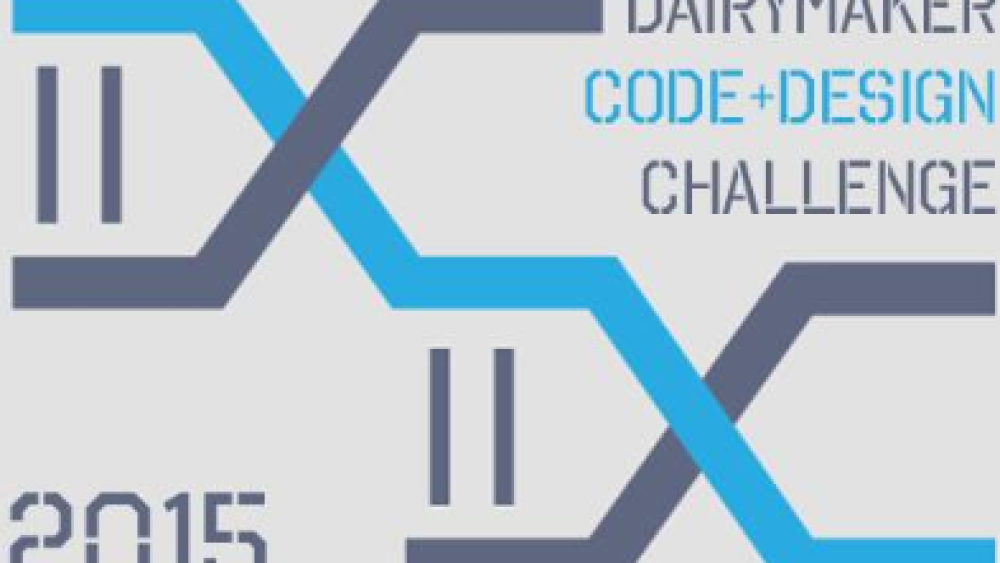Since 2011, Robotics Association of Nepal [RAN] has been organizing a national level robotics competitions and workshops to promote and educate in all the allied fields of robotics. Our constant search for relevance of technology and collaboration has seen our flagship robotics event, YANTRA, grow into an enterprising Art, Science, and Technology Festival, celebrating different domains of knowledge.
Following the success of recent YANTRA 3.0, RAN will now feature an open DairyMaker Code+Design Challenge (DCDC) 2015 to enhance both automation and regulation skills in the dairy industry in Nepal. Through DairyMaker code + design challenge we offer students and professionals an unique opportunity to put their ideas into practice and inspire solutions to the local problems in the dairy industry. DCDC 2015 will also be supplemented by a series of workshops and events that will integrate the skills of designing, engineering, and prototyping.
 Participant teams will be evaluated by an expert team for concept originality, feasibility, replicability, and innovation. Selected teams will receive specific training and ongoing research/development support from RAN. Three winning teams will then receive support for prototyping their designs and interacting with dairy experts. In competing in DCDC 2015, all participants will learn design-thinking and applicable engineering skills to address real problems and build tangible solutions.
Participant teams will be evaluated by an expert team for concept originality, feasibility, replicability, and innovation. Selected teams will receive specific training and ongoing research/development support from RAN. Three winning teams will then receive support for prototyping their designs and interacting with dairy experts. In competing in DCDC 2015, all participants will learn design-thinking and applicable engineering skills to address real problems and build tangible solutions.
Why Dairy Industry?
Dairy industry in Nepal is an incredibly dynamic sector, including livestock farmers to dairy entrepreneurs to nutritionists to food technologists to electrical and mechanical engineering to ICT experts. The industry reaches from the far-flung areas of Nepal’s rural landscape to highly automated production spaces in urban centers.
RAN believes that the dairy industry can increase its production efficiency and economic gain by utilizing features of automation and regulation ability locally in the production, procurement, storage, processing and distribution of dairy products. By initiating DCDC 2015 and venturing into prototyping, we also believe that we can innovate local solutions to our specific problems and engage a larger base of small dairy entrepreneurs across the country.
EVALUATION CRITERIA:
Creative originality: A vision that considers functions and aesthetics
Feasibility: Design can be implemented using available products, installment capacity, and energy availability in the local market
Replicability: Design concept is amenable to decentralized production and maintenance
Innovation: Design concept demonstrates innovative application in enhancing dairy production and meets user needs
TEAM SPECIFICATION:
A team may consist of a maximum of 4 members. Students / Professionals from different educational institutions and discipline can also form a team.
ELIGIBILITY:
Anyone who believes in solving local problem through local innovation and interested in using technology as a tool to prototype a solution.
If you have any confusion regarding rules then contact:
Dipesh Khanal | Secretary | 9841560420
FAQS
What is a code+design challenge?
It is a competition for ideas that use coding in its function and design aesthetics to innovate solutions.
Interesting. Then, what exactly is DCDC2015?
It is a code+design challenge to
(1) identify a challenge in local dairy industry,
(2) propose a solution and,
(3) build a working prototype that solves the identified challenge.
Wow! That is ambitious. But, I do not know what challenges exist in the dairy industry?
You ask too many questions. But, since we are nice, here are a few challenges:
Supply chain in collection of milk
- Automated milking
- Cold storage
Dairy Production:
- Humidity regulation
- Temperature regulation
- Bacterial regulation
Distribution:
- Automated Dispensing
- Leakage while packaging
- Over and under weight of milk products
Examples of challenges in small scale Cottage Cheese (paneer) making process:
· Temperature control system
· Automated rennet (Catalyst used in Coagulation process) adding system without supervision.
· Automated cutting system ( using gears or suspensions)
· Timer
· Motors ( for stirring purposes)
· Drainage ( for separating whey)
· Pressing ( to give a cubical firm shape)
Other challenges
- Cattle management in farming level
- Milk collection through herds
- Cattle proper health care report
- Accurate fat and SNF
- Waste management
[embedyt] http://www.youtube.com/watch?v=3F7n_ZoknLE[/embedyt]
[embedyt] http://www.youtube.com/watch?v=PDp6F6DirGg[/embedyt]
 Participant teams will be evaluated by an expert team for concept originality, feasibility, replicability, and innovation. Selected teams will receive specific training and ongoing research/development support from RAN. Three winning teams will then receive support for prototyping their designs and interacting with dairy experts. In competing in DCDC 2015, all participants will learn design-thinking and applicable engineering skills to address real problems and build tangible solutions.
Participant teams will be evaluated by an expert team for concept originality, feasibility, replicability, and innovation. Selected teams will receive specific training and ongoing research/development support from RAN. Three winning teams will then receive support for prototyping their designs and interacting with dairy experts. In competing in DCDC 2015, all participants will learn design-thinking and applicable engineering skills to address real problems and build tangible solutions.
